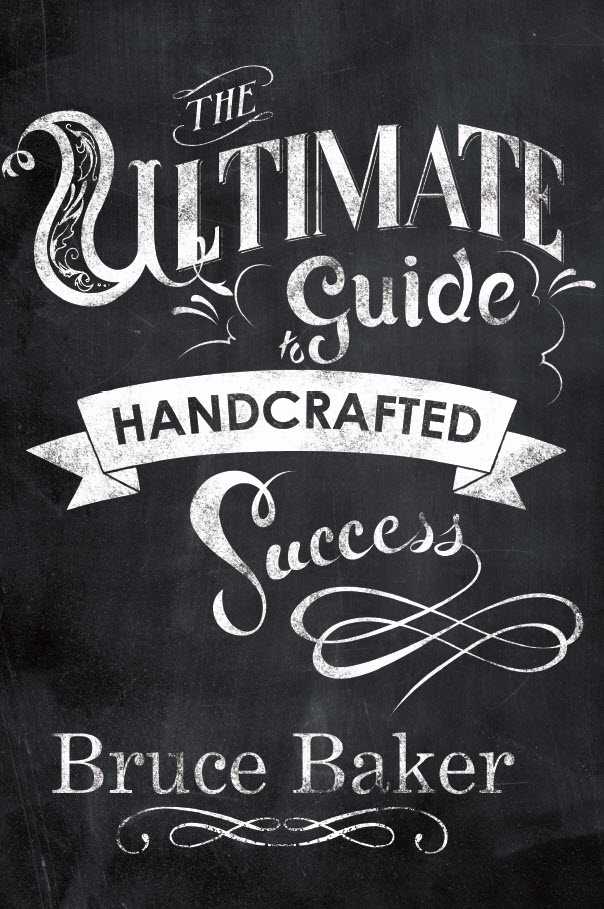
By Patrice Lewis
Ah, the great outdoors. Sunshine, fresh air, the birds singing. What could be better than this? If you’re an artist selling at a crafts fair, lots.
The great outdoors can also mean hot sun, destructive wind, pouring rain and anything else the Weather Channel can serve up. If you are a vendor at an outdoor craft show, it pays to be prepared.
This isn’t to suggest outdoor shows are inherently worse than indoor ones. Far from it. If the weather cooperates, there are few things more enjoyable than vending at a lively sun-kissed event.
Be prepared
The biggest difference in preparing for indoor vs. outdoor events is obvious: the weather.
A roof over your head—a sunshade of some sort—is the most apparent necessity. Depending on the requirements of the event, your roof can be canvas, plastic or wood. This will provide protection from the sun and precipitation.
However, don’t forget to consider side panels as well. Side panels can cut wind, protect you from side-blowing rain, and keep low-angled sunlight from blasting you. (Or they can lift your booth off the ground and send it sailing, so stake your booth securely.)
If you have a choice—and you may not—try to angle your booth away from the west. As the sun begins to get low in the afternoon, it may smother you in heat and blind you with light to the point where customers avoid you.
Be aware that any weather-related woes you experience may add insult to injury by affecting how many people attend the event. If the heat is oppressive or the rain is daunting, then no one will come. (Hard to blame them, really.)
Foiling theft
It’s not just the weather you need to prepare for at an outdoor venue; you also need to think about theft.
With few exceptions, you are far more vulnerable to having your stock ripped off during the wee hours at an outdoor event than an indoor event. The more brazen thieves won’t even bother waiting until 2 a.m.—some of them may slip a hand (or whole body) into the back of your booth during the day while you’re occupied at the front.
If your booth has floor-to-ceiling side panels, make sure they are clipped together at the corners so someone can’t just lift the flap and slip into your booth. Since the back of your booth is the most likely place you will keep cash, spare stock, your wallet or purse, and other valuables, it behooves you to keep it as safe as possible.
Unless the event can guarantee an amazing degree of security during the night, you may wish to completely remove all stock at the end of the day and either lock it in your car or otherwise secure it.
Once a year we do an enormous beer festival in downtown Portland, Oregon. Every night we are the last vendor to leave because we’re busy breaking down our stock and stowing our product in the back of the car for safe-keeping.
Once a year we do an enormous downtown outdoor show in a large city. Every night we are the last vendor to leave because we’re busy breaking down our stock and stowing our product in the back of the car for safe-keeping.
It’s a hassle, but it’s worth it: we’ve never lost one of our pieces to middle-of-the-night theft.
Once a year we do an enormous beer festival in downtown Portland, Oregon. Every night we are the last vendor to leave because we’re busy breaking down our stock and stowing our product in the back of the car for safe-keeping.
It’s a hassle, but it’s worth it: we’ve never lost one of our pieces to middle-of-the-night theft.
Learn the limitations
As a general rule, most outdoor events do not provide electricity. The exception is when the event supplies the booth, in which case they usually supply a single 60-watt overhead lightbulb. However, if you use your own booth and the function continues after dark, you’ll be…well, in the dark.
If your booth requires electricity to highlight your products (such as stained glass or jewelry), you’ll have to provide your own lamps and make arrangements ahead of time with the event coordinators to have electricity supplied.
Whatever décor or displays you use outdoors must be tough enough to handle breezy or even windy conditions, dust kicked up by the crowds, warm temperatures, rain, and other adversities.
Make sure your shelving units or other displays are steady. What might work well on a linoleum floor indoors may not translate onto rough ground in windy weather.
If you work on the old principle that if anything can go wrong, it will…then you can prepare appropriately.
Another consideration for doing outdoor shows is the need to match your product to the conditions.
For most people, this is not a big deal. After all, hand-knitted sweaters and scarves can handle hot sun as well as chilly temperatures.
But if your product can be damaged by moisture, you must either protect your stock from all possible forms of wetness (including fog, rain, humidity, condensation, etc.), or you’ll have to limit yourself to indoor events.
We did one event in which the temperature grew very hot—in the low 100s. Our beer steins sold briskly—people wanted something to drink from—but unfortunately for the vendor next to us, handmade candles weren’t surviving the warm weather.
We spent much of the weekend shuffling her candles in and out of our ice chest in an effort to keep her products from melting. Our efforts were not entirely successful because our fairly small ice chest couldn’t handle her entire stock, so a lot of her pieces became misshapen due to the heat.
It was not a financially successful show for her, since no one could see all of her products (they were all in our ice chest, after all).
The sturdiness factor
The more delicate your product, the more difficulty you’ll have doing outdoor shows (remember the candles).
Once we did a show at which the vendor next to us sold beautiful and fragile glass items. The weather was perfect…until the very end. When the show ended a microburst hit us out of the blue. It literally destroyed our booth, though we had packed away our stock so the tankards were safe. The woman next to us lost not only her booth, but most of her glass pieces as well.
Of course, outdoor shows occur during the most favorable time of year for good weather, but you always take your chances. Try to be prepared as much as possible—and hope for the best.
It should be noted that the show coordinators are not responsible for lost stock or sales due to weather, so don’t hassle them about it. We remember an event in which the weather got very foggy overnight. A vendor’s tent—a rental tent owned by the event—leaked moisture onto her product, ruining some of it. She tried to make the event promoters pay for lost sales and stock by constant pestering. She didn’t succeed.
The benefits of four walls and a roof
For obvious reasons, indoor shows have their advantages.
Weather is not a factor, unless it is so bad that it keeps customers from coming in the first place.
You don’t need a “booth” per se. As long as you designate your ten-by-ten space as yours by using appropriate shelving units, tables, or other displays, you can get by with less infrastructure.
Sometimes, though not always, electrical floor or wall sockets may be available. Again, however, don’t assume this. If your booth requires electricity, make those requirements clear on your vendor application.
Security is more easily achieved at an indoor event. After the event, the room is cleared out and locked. Voila. However, if your stock is extremely valuable and/or easily hidden and transportable (such as jewelry), it wouldn’t hurt to pack it away for the night. It goes without saying that all cash should be removed from the premise as well.
The bling factor
Indoor events are—or can be—more “glitzy.”
Would your products be better displayed with fancy lighting, elegant signage, or other eye-catching accents? You have a far better chance of dressing up your booth indoors than you do outdoors. Outdoors, one gust of wind would rip away most light decor. Indoors, you can expand.
In fact, it is best to dress up your indoor booth as much as possible (without irritating your fellow vendors, of course). Tasteful use of lighting and accents will bring you notice by passersby, after which your beautifully displayed products will draw them into your booth.
At the first large indoor show we did (a holiday gift show held in a convention center in a major city), we approached our booth display with pathetic naiveté. We were fairly new in business and had only done outdoor events. Our products are sturdy, earthy items that normally don’t lend themselves to glitz and glitter. And therein lay our mistake.
We had our product displayed on wooden shelving units, as we always did at outdoor events. That was it.
For three days we were lost in a sea of 450 other vendors, most of whom had the good sense to use every eye-catching tactic in the book to draw in customers. The event was a financial disaster…as well as a lesson learned.
Eenie meenie minie moe
So what should you do—indoor or outdoor events?
Why, both of course. Both types of venues can reap financial awards and be a lot of fun. With some sensible preparations and an awareness of external conditions, your booth can be attractive, appealing, and a serious money-maker. TCR
Patrice Lewis is a wife, mother, homesteader, homeschooler, author, blogger, columnist, and speaker. An advocate of simple living and self-sufficiency, she has practiced and written about self-reliance and preparedness for almost 30 years. She is experienced in homestead animal husbandry and small-scale dairy production, food preservation and canning, country relocation, home-based businesses, homeschooling, personal money management, and food self-sufficiency. She and her husband have been married since 1990 and have two daughters.




